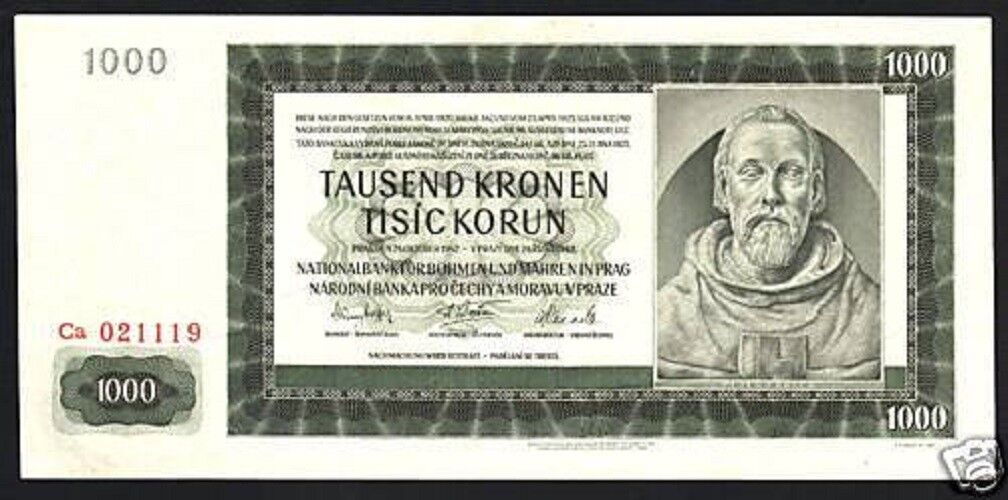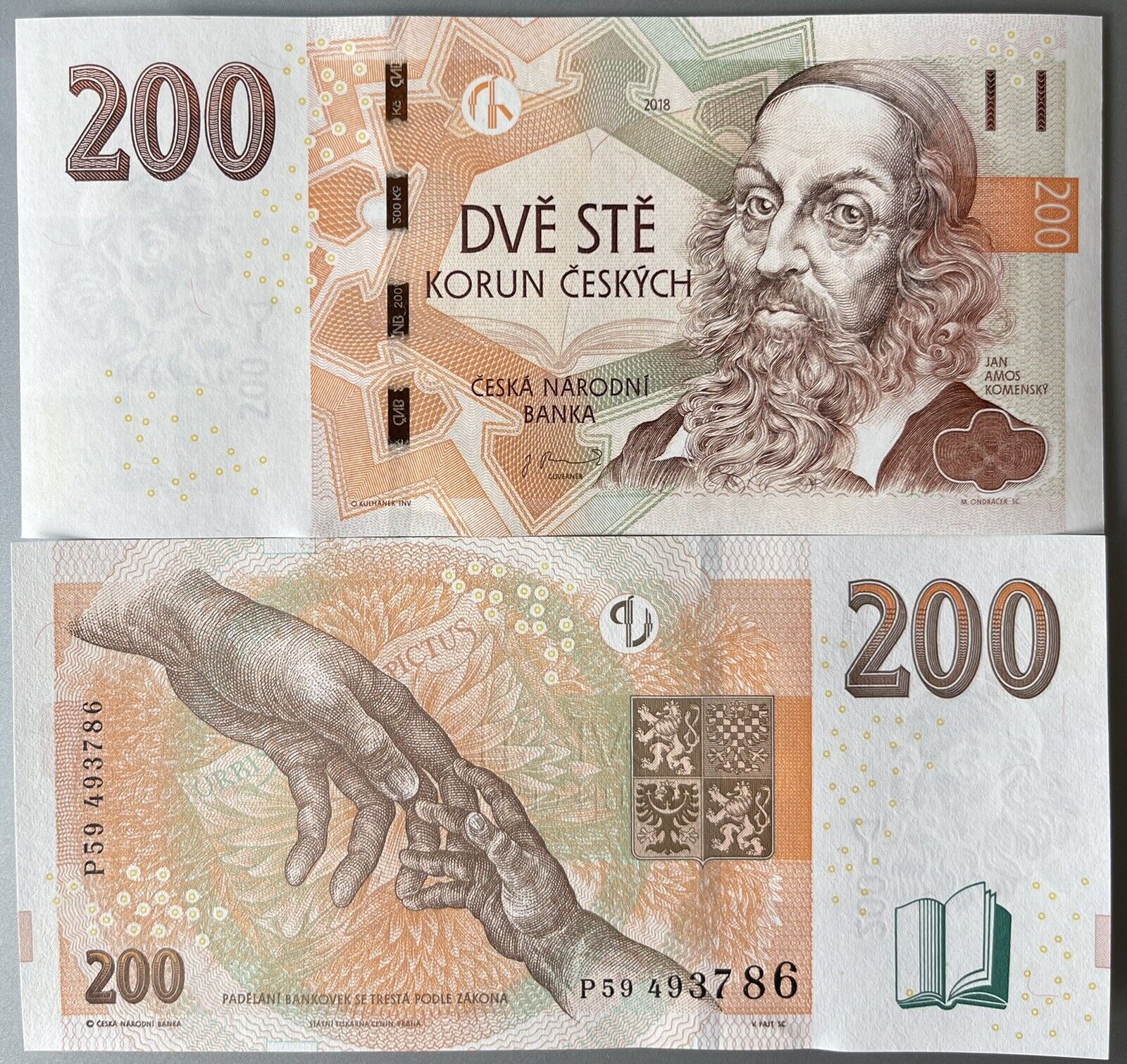-40%
Czech Republic - 500 korun - year 1993 - Bozena Nemcova -after Velvet revolution
$ 30.62
- Description
- Size Guide
Description
The koruna (sign: Kč; code: CZK) is the currency of the Czech Republic since 1993, and in English it is sometimes referred to as Czech crown. The koruna is one of European Union's 11 currencies, and the Czech Republic is legally bound to adopt the euro currency in the future.The official name in Czech is koruna česká (plural koruny české, though the zero-grade genitive plural form korun českých is used on banknotes and coins of value 5 Kč or higher). The ISO 4217 code is CZK and the local acronym is Kč, which is placed after the numeric value (e.g., "50 Kč"). One koruna equals 100 haléřů (abbreviated as "h", singular: haléř, nominative plural: haléře, genitive plural: haléřů – used with numbers higher or equal to 5 – e.g. 3 haléře, 8 haléřů), but haléře have been withdrawn, and the smallest unit of currency is 1 kč.
The Czech koruna replaced the Czechoslovak koruna when it was introduced in 1993 after the dissolution of Czechoslovakia. It first consisted of overstamped 20, 50, 100, 500, and 1000 Czechoslovak koruna banknotes, but a new series was properly introduced in 1993.
In November 2013, the Czech National Bank has intervened to weaken the exchange rate of the koruna through a monetary stimulus in order to stop the currency from excessive strengthening. In late 2016, the CNB stated that the return to conventional monetary policy was planned for mid-2017.
Banknotes
The first Czech banknotes issued on 8 February 1993 consisted of Czechoslovak notes with adhesive stamps affixed to them. Only the 100, 500 and 1000 korun denominations were overstamped, the lower denominations circulated unchanged during this transitional period. Each stamp bears a Roman and Arabic number identifying the denomination of the banknote to which it is affixed (C and 100, D and 500, M and 1,000). Subsequent issues of the 1,000-korun note replaced the adhesive stamp with a printed image of same.
A newly designed series of banknotes of denominations 20, 50, 100, 200, 500, 1000 and 5000 korun were introduced later in 1993 and are still in use at present – except for 20, 50 and the first versions of 1000 and 5000 korun notes, since the security features of 1000 and 5000 notes were upgraded in the subsequent issues (The 2000 korun note, which has been introduced in 1996, is still valid in all versions, with and without the new security features). These banknotes feature renowned Czech persons on the obverse and abstract compositions on the reverse. Modern protective elements can be found on all banknotes.
Božena Němcová (4 February 1820 in Vienna – 21 January 1862 in Prague) was a Czech writer of the final phase of the Czech National Revival movement.
Her image features on the 500 CZK denomination of the banknotes of the Czech koruna.
According to the dating up to now accepted by the majority of Czech authors, Božena Němcová was born in 1820 as Barbara Pankel (or Barbora Panklová according to the usual Czech name-giving for women) in Vienna as a daughter of Johann Pankel from Lower Austria and Teresie Novotná, a maid of Bohemian origin. In her childhood she lived near the small town of Ratibořice, where her grandmother Magdalena Novotná played an important part in her life. Němcová would later write her most famous novel with the main character inspired by her grandmother.
When she was 17 years old, she married Josef Němec, fifteen years her senior, who worked as a customs officer and was therefore a state employee. The marriage was arranged by Barbora's parents and became an unhappy one, as the married couple did not understand each other very well. Němec was said to be a rude and authoritarian man. He was a Bohemian patriot, which did not sit well with his superiors, and he was often transferred to different locations and later lost his job. The couple had four children and suffered from a lack of money. Němcová died in poverty, estranged from her husband. She is said to have been in intimate relationship with the poet Václav Bolemír Nebeský. The Bohemian patriots arranged a magnificent funeral for her.













